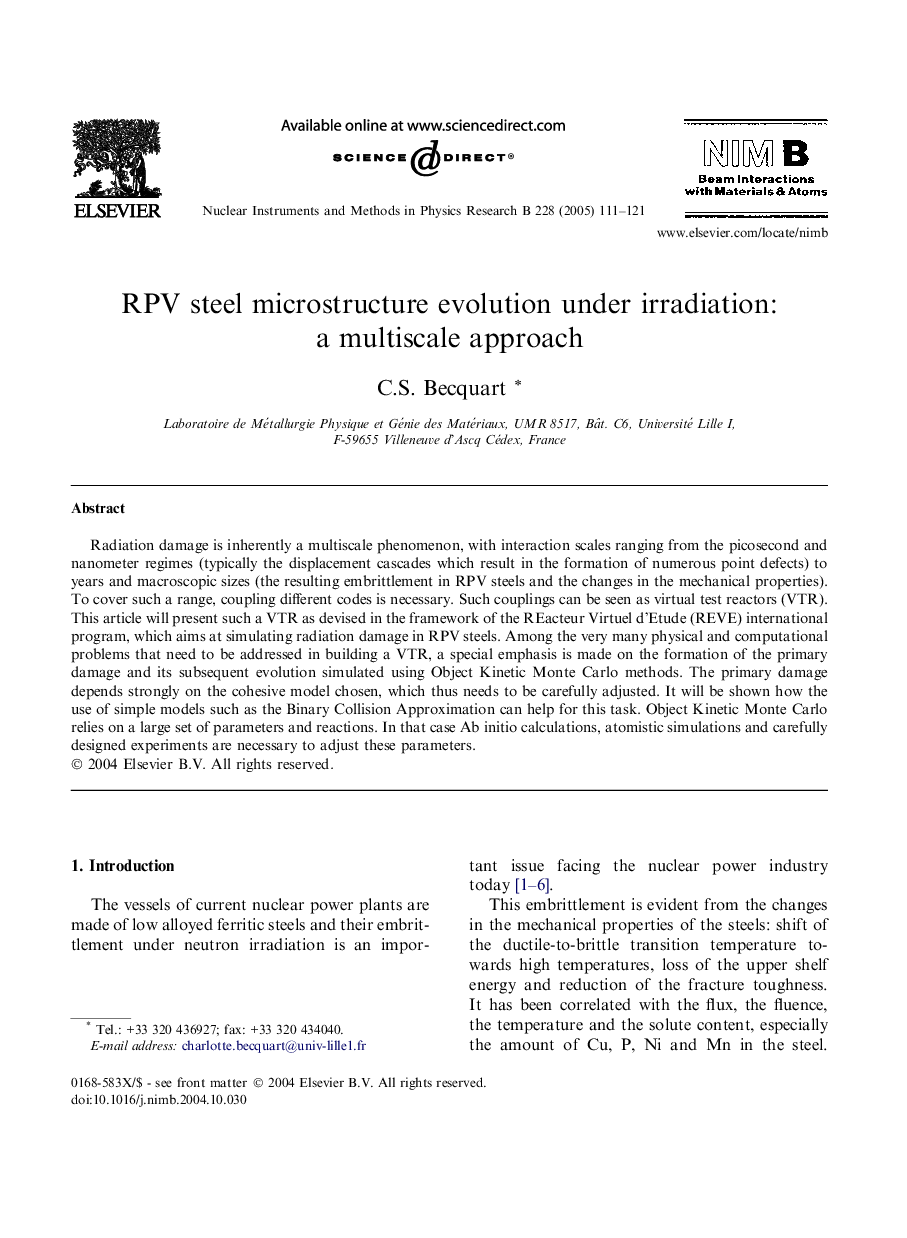| Article ID | Journal | Published Year | Pages | File Type |
|---|---|---|---|---|
| 9818391 | Nuclear Instruments and Methods in Physics Research Section B: Beam Interactions with Materials and Atoms | 2005 | 11 Pages |
Abstract
Radiation damage is inherently a multiscale phenomenon, with interaction scales ranging from the picosecond and nanometer regimes (typically the displacement cascades which result in the formation of numerous point defects) to years and macroscopic sizes (the resulting embrittlement in RPV steels and the changes in the mechanical properties). To cover such a range, coupling different codes is necessary. Such couplings can be seen as virtual test reactors (VTR). This article will present such a VTR as devised in the framework of the REacteur Virtuel d'Etude (REVE) international program, which aims at simulating radiation damage in RPV steels. Among the very many physical and computational problems that need to be addressed in building a VTR, a special emphasis is made on the formation of the primary damage and its subsequent evolution simulated using Object Kinetic Monte Carlo methods. The primary damage depends strongly on the cohesive model chosen, which thus needs to be carefully adjusted. It will be shown how the use of simple models such as the Binary Collision Approximation can help for this task. Object Kinetic Monte Carlo relies on a large set of parameters and reactions. In that case Ab initio calculations, atomistic simulations and carefully designed experiments are necessary to adjust these parameters.
Related Topics
Physical Sciences and Engineering
Materials Science
Surfaces, Coatings and Films
Authors
C.S. Becquart,
